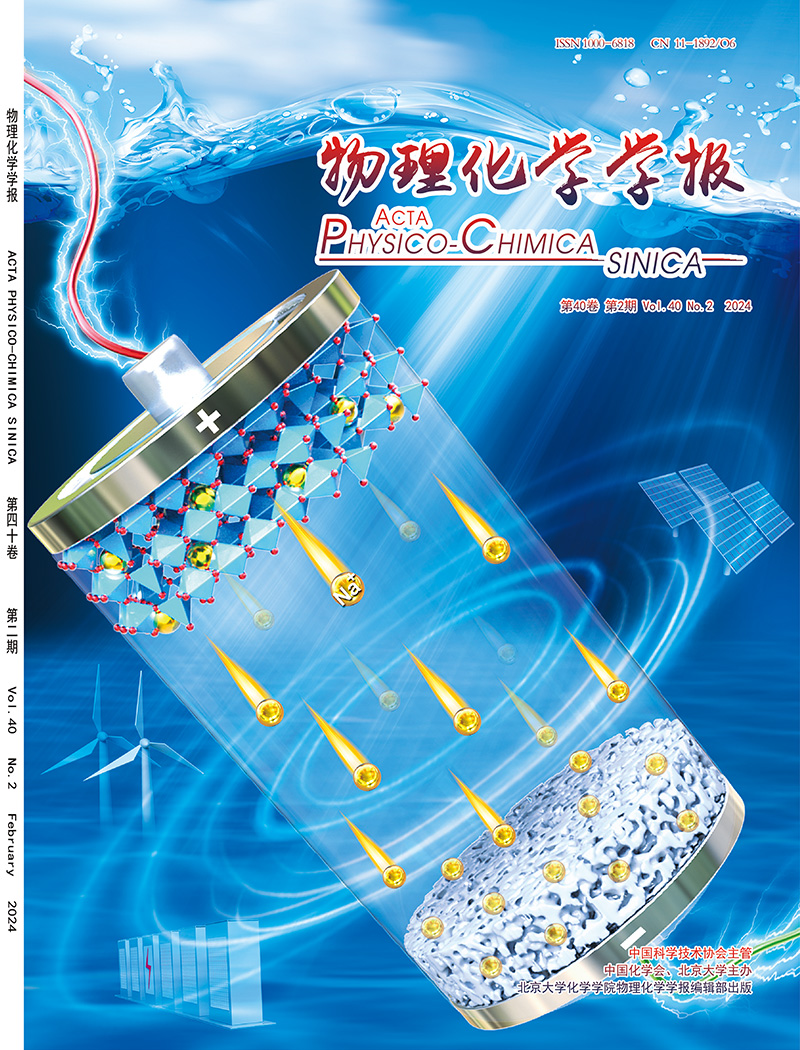Defective ultrathin two-dimensional materials for photo-/electrocatalytic CO2 reduction: Fundamentals and perspectives
IF 10.8
2区 化学
Q1 CHEMISTRY, PHYSICAL
引用次数: 0
Abstract
Photo-/electrocatalytic reduction of carbon dioxide (CO2) to carbon-based fuel molecules driven by renewable energy is an attractive strategy for resource regeneration and energy storage, especially for achieving carbon peak and carbon-neutral goals. However, the high thermodynamic stability and chemical inertness of CO2 molecules make the conversion efficiency and selectivity of reduction products very low, which further hinders its application. In addition, different CO2 reduction products have similar reduction potential and usually face severe hydrogen evolution competition under aqueous system conditions, which makes the selectivity of specific reduction products unable to be effectively controlled. To overcome these bottlenecks, researchers have been working for many years to develop efficient photo/electrocatalysts to enhance the activity and product selectivity of CO2 reduction. Thanks to the ultrathin thickness and large specific surface area, ultrathin two-dimensional materials possess highly active sites with high density and high uniformity, which can effectively regulate the key thermodynamic and kinetic factors of CO2 photo-/electroreduction reactions. As a typical two-dimensional material, the defective ultrathin two-dimensional materials can provide a large number of electron-rich catalytic sites to efficiently adsorb and highly activate CO2 molecules, which can effectively reduce the reaction barrier, thus accelerating CO2 reduction and enhancing product selectivity. Moreover, the local atomic and electronic structure of the defects can effectively stabilize the intermediate of CO2 reduction reactions, thus further optimizing the kinetics of CO2 reduction reactions. Furthermore, the surface defects are beneficial to the mass and electron transfer in the catalytic process, thus further improving the catalytic activity of the catalysts. In this review, we overview the latest research progress in CO2 photo-/electrocatalytic reduction using defective ultrathin two-dimensional materials, including the controllable synthesis and fine structure characterization of defective ultrathin two-dimensional materials; the modulation effect of defect structure on the local atomic and electronic structure; the advantages of defective ultrathin two-dimensional materials for CO2 reduction. We also discuss the challenges and opportunities of defective ultrathin two-dimensional materials for future development of CO2 photo-/electrocatalytic reduction. It is expected that this review will provide a guide for designing highly efficient CO2 reduction systems.

用于光/电催化CO2还原的缺陷超薄二维材料:基础和观点
在可再生能源的驱动下,光/电催化还原二氧化碳(CO2)为碳基燃料分子是一种有吸引力的资源再生和能源储存策略,特别是实现碳峰值和碳中和目标。但由于CO2分子具有较高的热力学稳定性和化学惰性,使得还原产物的转化效率和选择性很低,进一步阻碍了其应用。此外,不同的CO2还原产物具有相似的还原潜力,在水体系条件下往往面临激烈的析氢竞争,这使得特定还原产物的选择性无法得到有效控制。为了克服这些瓶颈,研究人员多年来一直致力于开发高效的光/电催化剂,以提高CO2还原的活性和产物选择性。由于超薄的厚度和大的比表面积,超薄二维材料具有高密度和高均匀性的高活性位点,可以有效地调节CO2光/电还原反应的关键热力学和动力学因素。缺陷超薄二维材料作为一种典型的二维材料,可以提供大量富电子的催化位点,高效吸附并高度活化CO2分子,从而有效降低反应势垒,从而加速CO2还原,增强产物选择性。此外,缺陷的局部原子和电子结构可以有效地稳定CO2还原反应的中间体,从而进一步优化CO2还原反应的动力学。此外,表面缺陷有利于催化过程中质量和电子的传递,从而进一步提高催化剂的催化活性。本文综述了利用缺陷超薄二维材料进行CO2光/电催化还原的最新研究进展,包括缺陷超薄二维材料的可控合成和精细结构表征;缺陷结构对局部原子和电子结构的调制效应缺陷超薄二维材料在CO2还原方面的优势。我们还讨论了有缺陷的超薄二维材料对未来发展CO2光/电催化还原的挑战和机遇。期望本文的综述能够为设计高效的CO2减排系统提供指导。
本文章由计算机程序翻译,如有差异,请以英文原文为准。
求助全文
约1分钟内获得全文
求助全文

 求助内容:
求助内容: 应助结果提醒方式:
应助结果提醒方式:


